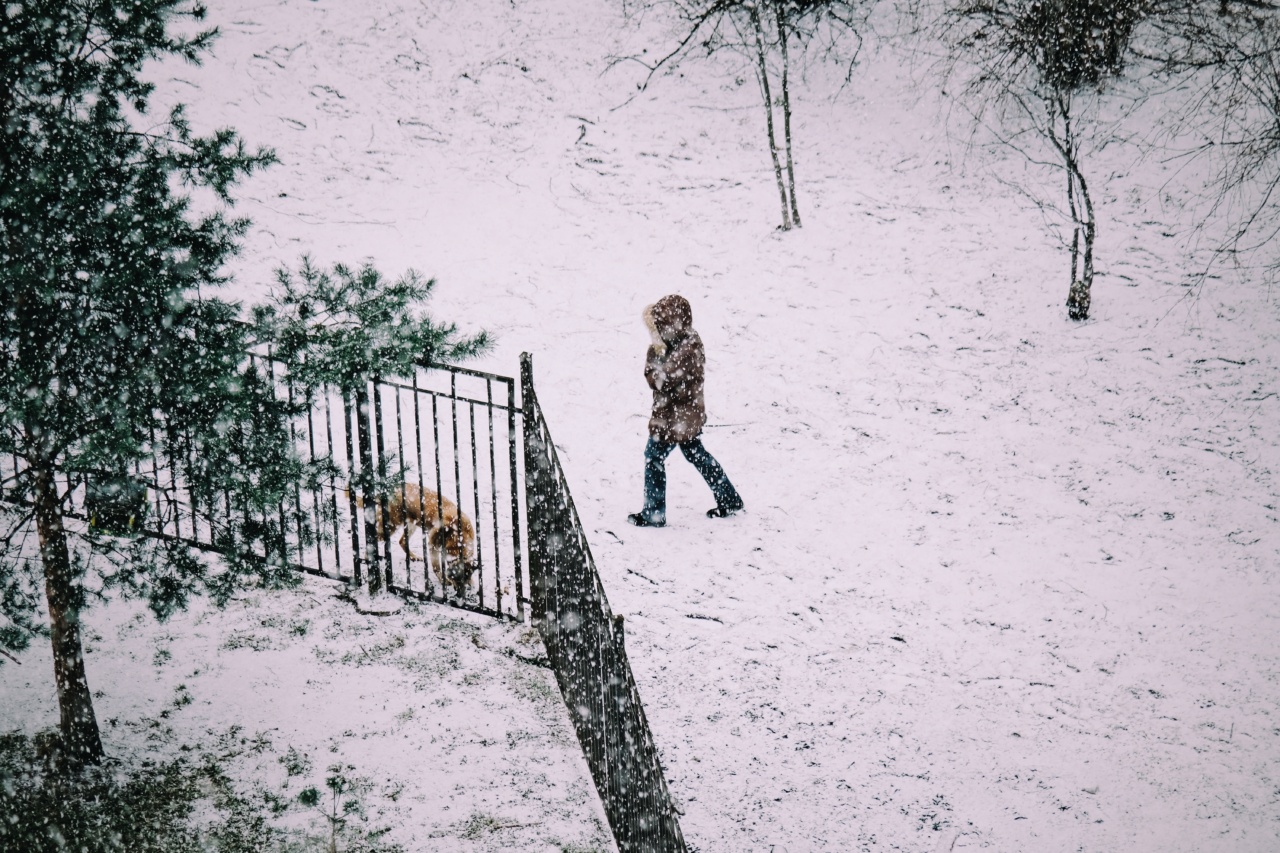When temperatures drop, it’s crucial to ensure that your furry friend is well protected from the cold. Just like humans, dogs can suffer from frostbite and hypothermia if exposed to extreme weather conditions for prolonged periods.
While some dog breeds have thick fur coats that provide natural insulation, others, especially smaller and short-haired breeds, are more susceptible to the cold. Protecting your dog from the cold will not only keep them comfortable but also prevent potential health risks.
Signs of Cold Stress in Dogs
Knowing the signs of cold stress in dogs is essential to prevent any harm caused by exposure to low temperatures.
Some common signs of cold stress in dogs include shivering, reluctance to go outside, seeking warm areas, licking or biting their paws, and curling up into a ball to conserve body heat. If you notice any of these signs, it’s important to take immediate action to protect your dog from the cold.
Provide Adequate Shelter
One of the primary ways to protect your dog from the cold is by providing them with adequate shelter. If your dog spends a lot of time outside, ensure that they have a warm and insulated doghouse or shelter to retreat to.
The shelter should be elevated off the ground to prevent cold from seeping in, and it should have a door or flap to keep the wind out. Additionally, make sure the shelter is large enough for your dog to stand up, turn around, and lie down comfortably.
Dress Your Dog Appropriately
For dogs that are more susceptible to the cold, such as small breeds or those with short fur, dressing them in appropriate winter clothing can provide an extra layer of insulation.
There are various dog sweaters, jackets, and boots available that are specifically designed to keep dogs warm in cold weather. Ensure that the clothing fits properly and covers their body adequately, without restricting movement or causing discomfort.
Protecting Your Dog’s Paws
During the winter, your dog’s paws are exposed to cold surfaces such as snow, ice, and salted sidewalks. These can cause chapping, cracking, and even chemical burns.
To protect your dog’s paws, consider using paw wax or balm before heading out. This forms a protective barrier and reduces contact with ice and chemicals. Additionally, wipe your dog’s paws with a warm and damp cloth after walks to remove any ice or salt residues that may be stuck between their toes.
Limit Outdoor Time
While it’s important for dogs to get their exercise, it’s crucial to limit their time outdoors during extremely cold weather. Prolonged exposure to low temperatures can be dangerous, even for dogs with thick fur coats.
If the weather is exceptionally cold, consider shorter walks or playtimes and create indoor activities to keep your dog mentally stimulated. Indoor training sessions, puzzle toys, and interactive games can help keep your dog entertained and safe from the cold.
Keep Your Dog Warm Indoors
When your dog is indoors, make sure they have warm and cozy places to rest. Provide them with comfortable bedding away from drafts and cold floors. You can also consider using heated pet beds to provide additional warmth during colder months.
Keep your home at a comfortable temperature for your dog, as extreme temperature fluctuations can be stressful for them. If you’re using a space heater, ensure it’s safely positioned and out of your dog’s reach.
Proper Nutrition and Hydration
Ensuring your dog maintains a healthy diet and stays hydrated is crucial for their overall well-being, especially during the winter. Keeping your dog well-nourished helps their body generate more heat.
Consider consulting with your veterinarian to adjust your dog’s diet based on their age, breed, and activity level. Additionally, provide fresh and unfrozen water at all times. It’s easy for dogs to become dehydrated during winter, and snow or ice is not a reliable source of hydration.
Be Mindful of Antifreeze and Chemicals
Antifreeze and other chemicals commonly found during the winter months can be extremely hazardous for dogs. Even a small amount of antifreeze ingested by a dog can be fatal.
Ensure that all chemicals, including antifreeze, are stored securely and out of your dog’s reach. After walks or outdoor play, wipe your dog’s paws to remove any potential chemicals they may have come into contact with.
Groom Your Dog Regularly
Regular grooming is essential for your dog’s overall health and well-being, even in the winter. Keeping your dog’s coat clean and well-maintained helps to insulate their body and prevent the formation of ice balls or matting.
However, be cautious not to overdo bathing during the colder months, as this can strip their coat of natural oils that provide insulation. Consult with a professional groomer regarding the appropriate grooming routine for your dog during winter.
Watch for Signs of Hypothermia and Frostbite
Despite your best efforts, it’s important to be aware of the signs of hypothermia and frostbite in dogs. Hypothermia occurs when a dog’s body temperature drops dangerously low, while frostbite refers to the freezing of body tissues.
Symptoms of hypothermia include lethargy, weakness, slow breathing, dilated pupils, and uncontrollable shivering. Frostbite is characterized by pale or blue skin, swelling, and blisters. If you suspect your dog is suffering from either condition, seek immediate veterinary attention.
Conclusion
Protecting your dog from the cold is crucial to ensure their comfort and well-being during the winter months.
By providing adequate shelter, dressing them appropriately, protecting their paws, and being mindful of their time spent outdoors, you can help prevent cold-related health risks. Additionally, maintaining a healthy diet, grooming regularly, and watching for signs of hypothermia and frostbite are vital aspects of keeping your dog safe and warm.
Prioritizing your dog’s winter safety will allow you both to enjoy the season while keeping them healthy and protected.






























